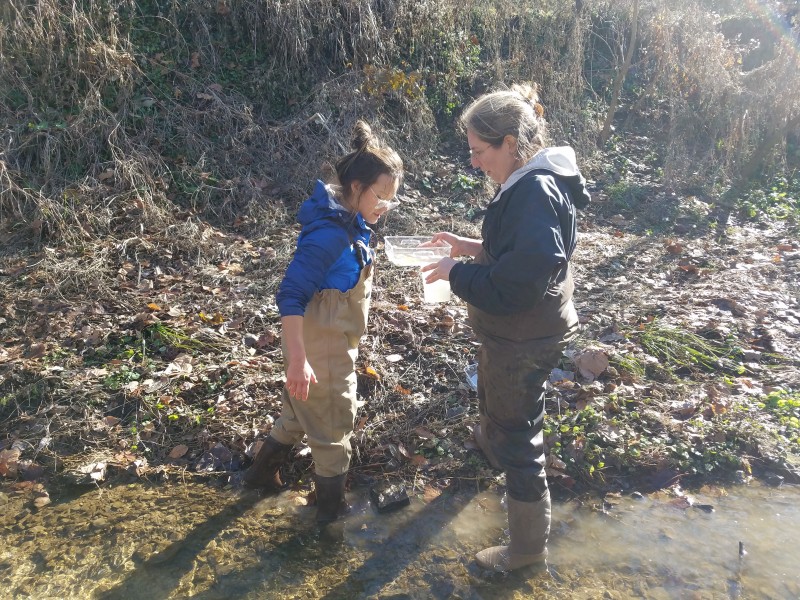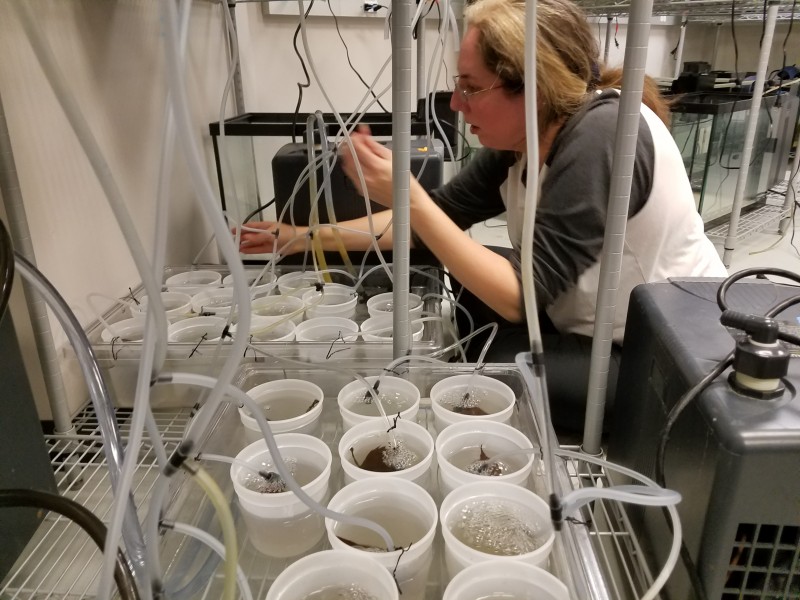Re-posted from Danelle’s Science Blog. I’ve added some extra photos at the bottom.
Normally, I wouldn’t consider field work before Thanksgiving to be winter field work, but when we arrived at the site, the water temperature was only 3 degrees C and there were small patches of ice along some of the stream banks. We proceeded to spend about 7 hours in the chill water (with waders on), picking up many small rocks (and several not-so-small rocks) with our bare hands in order to look for our mayfly friends. While slow and tedious, this hand collecting method is the most effective for gathering wild specimens without causing injuries to the delicate critters – as long as you can still feel your fingers.
By the end of the day, we had collected over 450 mayflies. As someone who is working to preserve aquatic life, there is a part of me that regrets taking so many animals from the stream. Fortunately, I know that this stream is supporting a very large and healthy population of this species. Within the 120-meter segment of stream where we sampled, we left large patches of habitat undisturbed and did not take the smaller individuals. In addition, there were many other patches of prime habitat both upstream and downstream of the area where we collected. I share these bits of information because I want to make it clear that, as a responsible scientist, I consider the environmental costs and potential long-term effects of any collection efforts that I undertake.









